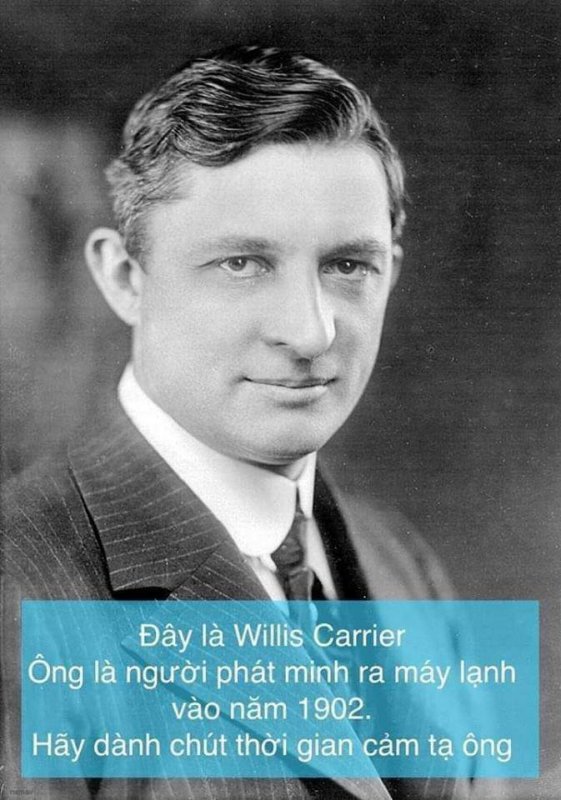"Nhất" thì chắc không có cái nào nhất, phát minh nào cũng đều là vĩ đại:
19 Great Inventions That Revolutionized History
Here is a list of some of the most important inventions which thoroughly transformed our world as we see it today.
Let’s look at some of the greatest inventions that revolutionized history.
1. The Wheel (3500 BC) – Let’s Get Things Rolling
Source:
zsuzsannasolti/Pixabay
When we look back in history, the first invention that changed the future of mankind was the
invention of the wheel. Whether its travel or the transportation of goods, the invention of wheels made it much easier than ever before.
Wheels were not only used on vehicles in prehistoric times; they were also used in pulley systems. Surprisingly though, the application of wheels was not primarily used on carts or carriages.
Evidence suggests that they were first used as potter’s wheel in 3500 B.C. Today, wheel and its derivative are present all around us, serving us in easing our efforts and getting the job done!
2. The Compass (206 BC) – The Pathfinder
Throughout the history, humans had an unquenchable thirst for exploring the unknown. But it wouldn’t have been possible without knowing the reference points that helped in identifying the geographical location.
This is why compasses were one of the most important tools that helped mankind to explore and record the land and water masses around the world. In today’s world of satellites and GPS, it may seem irrelevant, but it was one of the key inventions that changed the world for better!
The compass was
invented by the Chinese to aid in fortune telling, but its scope in travel and navigation was realized only in 11th century AD.
3. Waterwheel (50 BC) – The Overlooked Invention
Source:
Smallbones/Wikimedia Commons
Water wheels are often neglected from the most notable inventions that changed history. But let’s not forget about the first invention that helped mankind to generate power from sources other than humans and animals.
The waterwheel was invented by
Roman engineer Vitruvius. It converts the force exerted by flowing or falling water into mechanical energy. This mechanical energy was then used to crush grains, power lathes, drive sawmills, power textiles, forge bellows, and much more.
It is reported that there was
nearly 6000 of them in Europe in 1086.
4. Calendar (45 BC) – Save The Date
Source:
Asmdemon/Wikimedia Commons
The modern calendar did not come into use until the 1600s, so there were many forms of calendars that were used to fill in for a unified system.
The first form of the calendar used by Egyptians was the
solar calendar. Then, Julius Caesar brought the Julian calendar that used a 12-month system.
But, it had a major flaw as it was off by 11 minutes. The
Gregorian calendar or the modern calendar we use today was introduced by Pope Gregory XIII in 1582.
5. Pozzolana (27 BC) – The Ancient Concrete
Source:
Epolk/Wikimedia Commons
We live in a world that is built using bricks and mortar. All the buildings that stand tall from skyscrapers to even the single storied ones use the same combination of materials that keep them together without toppling over – Concrete.
The invention of concrete dates back to ancient Rome. The Romans used a different combination of elements to create a binding mixture than their modern-day equivalent.
Pozzolana uses an aluminous and siliceous mixture which reacts with calcium hydroxide at room temperature in the presence of water to form a substance that has cementitious properties.
No wonder why Romans colosseums and cathedrals stood the test of time without losing its beauty or aura!
6. Clock (725 AD) – the First Mechanical Clock
Source:
Wikimedia Commons
Imagine modern civilization without having a sense of time. A scenario where deadlines don’t matter nor the working hours. Frightening, isn’t it?
Time is something that helps us keep track of everything. Humans didn’t invent clock as such, as it was a redesign of the sundial.
Sundials were the first devices that man used to keep track of time, and its use dates back as long as
6 thousand years.
The Egyptians and the Chinese used water clocks to keep track of time. The first mechanical clock was made by Yi Xing of China in 725 AD.
7. The Printing Press (1450) – The Gutenberg Effect
Source:
Takomabibelot/Wikimedia Commons
The printing press is a prominent part of the foundation on which modern civilization was built upon. It was the invention of
Johannes Gutenberg from Germany.
The machine helped to mass produce newspapers and other forms of informative pieces. It also meant that the prices on printed paper came down and it was accessible for many.
The printing press served a great role in the
industrial revolution, and by then, even the lower classes were able to afford newspapers and get to know what happened around them.
The impact of the printing press in history can’t be put together better than the words of Mark Twain himself “
What the world is today, good and bad, it owes to Gutenberg.”
8. The Steam Engine (1712) –The Invention that Started a Revolution
Source:
Joost J. Bakker/Wikimedia Commons
Industrial revolution kick-started with a piece of invention that powered industries and locomotives alike. It all started with the invention of the steam engine by
Thomas Newcomen.
Do not confuse his invention with the steam-powered train as it was later invention by another inventor. The Newcomen engine was stationary and was used as a stationary pump or a motor.
It was the driving force behind the
industrial revolution.
9. Vaccines (1796) –One of the Most Important Inventions for Humankind
Source:
Cpl. Jackeline Perez Rivera/Wikimedia Commons
Vaccines have helped us in curbing a ton of life-threatening epidemics. It was estimated that nearly
500 million deaths were registered because of smallpox alone.
Edward Jenner was the first person recorded to have created a vaccine. He invented the smallpox vaccine that saved countless lives and earned him the title of Father of Immunology.
The world benefited a lot from the invention of vaccines as its derivatives helped the humankind to transgress periods of deadly diseases.
10. The Steam Powered Train (1814) - Chugging Along the Industrial Revolution
Source:
Petar Milošević/Wikimedia Commons
The first successful steam engine locomotive was built by
George Stephenson in 1814. George Stephenson built the steam engine based on the design by
John Blenkinsop.
It ran on the engine design put forward by
James Watt. The invention of the steam engine and its capability in carrying massive loads made it the best way to carry tons of load across vast stretches of land quickly.
Soon miles and miles of railroad was laid down to connect states and even countries.
11. Electric Battery (1800) – Volta’s Remarkable Feat
Source:
GuidoB/Wikimedia Commons
In the 1800s, people had no continuous electric lines that carried a constant supply of power. So, production of electricity was not at all an easy task.
This changed when the Italian inventor
Alessandro Volta invented the first ever battery using zinc and silver discs placed alternatively in the form of a cylindrical pile. The battery was able to produce repeated sparks and helped to operate many apparatuses.
12. Computer (1822) – The First Mechanical Computer by Babbage
Source:
Victorgrigas/Wikimedia Commons
Computers are one of humanity’s greatest inventions without a doubt. Primarily built for doing complex mathematical calculations, the computers of the past have evolved into machines that can be used to chart the movement of stars and rocks in space in advance.
The first
mechanical computer was invented by
Charles Babbage. But it was vastly different from what we have now.
It used moving parts to do the computations and weighed tons. The compact computers we use today are a result of inventions like the transistors and integrated circuits.
13. Refrigerator (1834) – Beating the heat in 1834
Source:
Infrogmation, New Orleans/Wikimedia Commons
According to the report of 2009 by the U.S Department of energy,
99% of US homes have at least one refrigerator. This statistic itself is representative of the popularity of the refrigerator in the modern world.
A refrigerator helps in keeping perishable food products last much longer than they would otherwise survive. The working of the refrigerator is very simple – to remove heat from an area of creating the cold condition.
The first vapour-compression refrigeration cycle was put forward by Jacob Perkins, who is also known as the
father of refrigeration. His refrigeration machine, built in 1834, was based on the theory put forward by
Oliver Evans.
14. Telegraph (1830-1840) – The Communication Device that Introduced the Morse Code
Source:
Wikimedia Commons
The Telegraph was the forerunner in communication prior to the invention of the telephone by
Antonio Meucci. It was developed by
Samuel Morse and his team of engineers.
With the invention of the telegraph, long-distance communication no longer had to depend on messengers. With the use of Morse code, long distance communication became easier, and people could communicate with their loved ones over long distances by sending their messages through telegram offices.
The batteries invented by Alessandro Volta enabled telegrams to be operated in controlled environments.
15. Steel (1850) – From Pins to the Brooklyn Bridge
Source:
Wlodi/Wikimedia Commons
Steel is one of the most commonly used building materials. It triumphs over iron and other costly building materials by a great margin. The
weight to strength ratio made steel a preferred choice of builders over other materials.
But steel is a relatively new invention as it was a result of
Henry Bessemer’s experiment with Iron. He wanted to lower the carbon content of iron than what was possible at that time.
The result was something that was flexible than cast iron, but stronger than wrought iron – the perfect mixture – Steel!
16. Electric Bulb (1880) – Lighting Up the World
Source:
William J. Hammer/Wikimedia Commons
The efforts to create a lightbulb started in around 1800s. But the inventions back then were not sustainable as the filament broke after a few days of use.
This made the commercial use of bulbs, not a feasible option. But fast forward to 1879,
Thomas Alva Edison and his group of engineers perfected the lightbulb by using tungsten as the filament material.
The patents for the modern day filaments received between the years 1879-1880. The invention of lightbulbs liberated humanity from the dependence of just daylight and brought about a scenario where people can work or do other labour-intensive chores at night under sufficient lighting conditions.
17. The Airplane (1903) –Making the Flying Dream Come True
Souce:
John T. Daniels/Wikimedia Commons
The human body was not engineered to make the flight and those who thought it could be achieved failed in their efforts.
Leonardo da Vinci was one of the visionaries who believed that man could indeed fly, provided that he can build an apparatus that can aid in flight.
The Wright Brothers were the ones who showed human flight in Action in 1903. Their invention evolved over the years to become what we now call as modern day airplanes.
Now humans can cover thousands of miles in a matter of hours thanks to the achievement of Wilbur and Orville Wright.
18. Transistors (1947) – The Secret of Modern Day Computing
Source:
Unitronic/Wikimedia Commons
The electronics age owe its inception to transistors. They were used to amplify electric signals, and their use in history primarily was
reserved to telephones.
The use of transistors means that cross-country telecommunication was possible as strategically placed transistors would amplify signals at certain points along the transmission line. It paved the way for signals to travel much farther without having a major impact on quality.
Transistors were developed by
Bell Laboratories to replace vacuum tubes that were used to amplify signals. Nowadays, transistors are used in CPUs and numerous other electronic devices.
19. ARPANET (1969) – The Primitive Internet
Source:
Defence Systems Agency/Wikimedia Commons
Some of you might not be familiar with the term
ARPANET, but you might be well accustomed to its modern-day version – the
Internet. There is no single person who can be credited with the invention of the internet as it was done by many.
The internet started out as a project undertaken by the United States Department of Defence called the ARPANET or the Advanced Research Projects Agency Network. It was invented for sharing data between multiple nodes spaced over larger distances.
By 1970s, Transmission Control protocol was developed by the scientist Vinton Chef that enabled computers to communicate with each other. The internet we know today was developed by a computer programmer named
Tim Berners-Lee as he created the World Wide Web, which essentially was a web of information that people can access.
A Long Way Indeed!
Looking back at these ground-breaking inventions, one thing is clear – our desire to thrive and improve. We see a society that invented the wheel to tread ground quickly, who mastered the skies and waves. It is truly remarkable and something that we will continue to do for ages to come!
https://interestingengineering.com/19-great-inventions-that-revolutionized-history






 mời cụ 1 ly
mời cụ 1 ly  cụ nằm 1 mình hay mấy mình ạ
cụ nằm 1 mình hay mấy mình ạ
.



 )))
))) cái này mang tính chất AQ ạ
cái này mang tính chất AQ ạ 
Thế nên là EVN có tăng giá tiền điện thì em vẫn k biểu tình đòi giảm giá điện đâu, bị cắt điện thì làm người tối cổ các cụ ạ


cụ ngồi ngay ngắn


)



nghe các cụ nói em cũng chẳng dám bấm vào. Thấy cộng đồng mạng nói suốt



























nghe các cụ nói em cũng chẳng dám bấm vào. Thấy cộng đồng mạng nói suốt